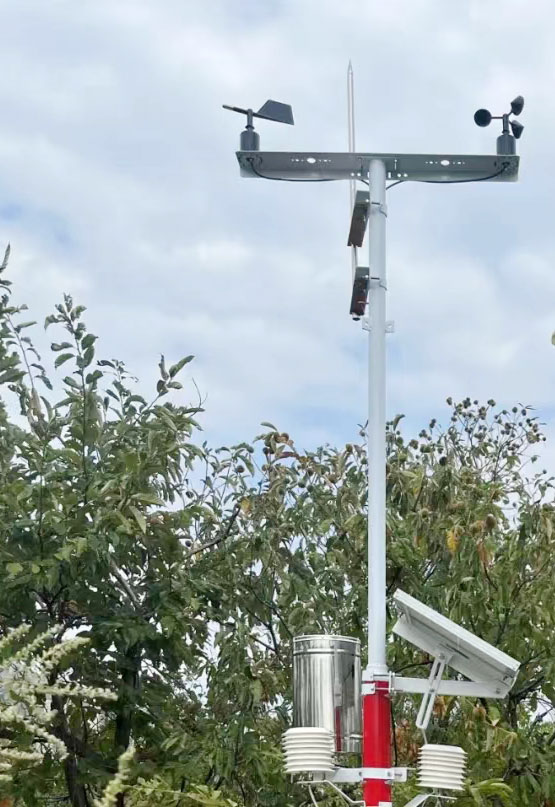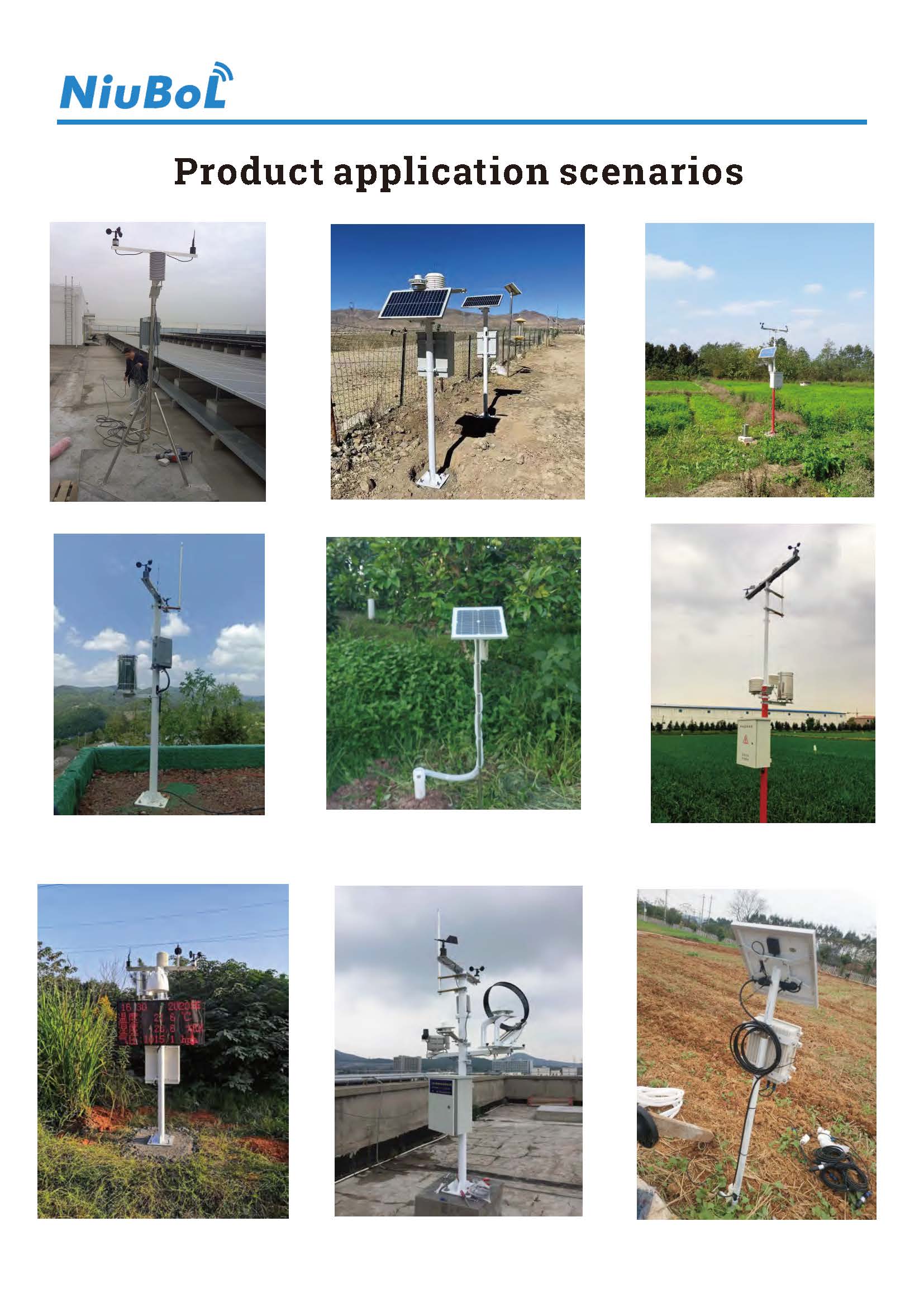

— Blogs —
—Products—
 Consumer hotline +8618073152920
Consumer hotline +8618073152920 WhatsApp:+8615367865107
Address:Room 102, District D, Houhu Industrial Park, Yuelu District, Changsha City, Hunan Province, China
Product knowledge
Time:2024-09-24 16:04:36 Popularity:2052
Introduction: Small weather stations are usually installed in open and open places, and are therefore exposed to the risk of lightning strikes. Although small weather station collectors have basic lightning protection, additional lightning protection measures are needed to ensure equipment safety. In this article, we will introduce in detail the small weather station lightning protection knowledge, to help you effectively prevent lightning disasters.
Small weather station's working environment determines its vulnerability to lightning. Although there are not many cases of small weather stations being struck by lightning, lightning is unpredictable, and once it occurs, it may cause serious damage to the weather station equipment. Therefore, the installation of lightning rods and other lightning protection facilities is an important measure to ensure the safe operation of small weather stations.
For 2.5 meters high automatic weather station, you can use simple lightning measures. Specific steps are as follows:
(1) Install the lightning rod on the top of the weather station bracket.
(2) Connect the lightning conductor directly to the underground angle to ensure good grounding.

For a 10-meter-high weather station, lightning protection measures need to be more stringent, as follows:
(1) Erect a wind pole higher than 10 meters at 2 meters next to the weather station.
(2) Install a lightning rod at the top of the wind pole.
(3) Lead the lightning rod to the underground lightning protection network. The requirements for setting the lightning protection ground net are as follows:
- Set up a rectangular frame with a length and width of 3 meters each.
- Connect the diagonal lines of the rectangular frame.
- In each corner of the rectangle welded 1.5 meters long conductive angle.
- Lightning line directly to the center of the diagonal position.
Lightning protection ground network construction is more complex, requires welding and civil construction. Ensure that the lightning conductor is firmly connected to the ground network, and the grounding resistance meets the requirements.
1. Protection of equipment safety: Although the small weather station is located in the open area, the probability of experiencing a direct lightning strike is relatively low, but there is still a risk in areas with frequent lightning activity. Lightning rod can attract lightning, through the grounding system will be the current into the earth, effectively avoid lightning directly hit the weather station equipment, reduce the possibility of damage.
2. Ensure data continuity: The continuity and accuracy of meteorological data is crucial. Lightning may cause instantaneous damage to the equipment and interrupt data collection, affecting the continuity of long-term observation and the reliability of research. The installation of lightning rods can guarantee the stable operation of the equipment in bad weather and ensure the continuous collection of data.
3. Compliance with safety norms: In many regions and industry standards, the installation of lightning rods is a mandatory safety measure for outdoor equipment, especially sensitive electronic equipment. This is not only for the protection of the equipment, but also for the safety of the operators to avoid indirect injuries caused by lightning.
4. Preventing unforeseen risks: Although the probability is small, the unpredictability of lightning means that in the event of a lightning strike, the damage can be enormous. Installing lightning rods as a preventive measure minimizes the potential damage from such unforeseen events and is a cost-effective option in the long run.
5. Part of a comprehensive lightning protection system: lightning protection for small weather stations is a systematic project that includes lightning rods, grounding systems and protective measures for the equipment itself. Lightning rod as the front-end protection, combined with other lightning protection measures to form a complete lightning protection system to ensure the overall lightning protection effect.
6. For weather stations above three meters, due to the characteristics of its metal pole, it is easier to attract lightning, so the installation of lightning rods is particularly necessary.
7. If the weather station is located indoors, there is no need to install lightning rods, because the indoor environment is relatively safe, lightning is not easy to hit directly.
It is worth noting that small weather station if installed indoors or completely enclosed environment, there is no need to install additional lightning rod, because the building itself usually has a lightning protection system.
However, outdoors, especially in open areas, the installation of lightning protection needles becomes crucial because weather stations with metal structures are more likely to become targets of lightning.
Although there are fewer cases of small weather stations being directly struck by lightning, the principle of prevention is especially important in extreme weather conditions. Especially in high-altitude or thunderstorm-frequent areas, perfect lightning protection measures can not only protect expensive equipment from damage, but also ensure the continuity of data collection and the safety of personnel.

Summarize
Lightning protection measures for small weather stations are the key to ensure the long-term and safe operation of weather stations. When selecting and installing lightning protection facilities, they should be reasonably configured according to the height and environmental characteristics of the weather station. Although the probability of lightning strikes is not high, it is wise to take appropriate lightning protection measures as a precautionary measure, reflecting the comprehensive consideration of equipment protection under extreme weather conditions. Through the introduction of this article, we hope that you can better understand the knowledge of lightning protection for small weather stations to ensure the stable operation of the weather station.
Prev:Small weather station care and maintenance guide
Next:Micro Weather Station Site Selection and Installation Tips
Related recommendations
Sensors & Weather Stations Catalog
Agriculture Sensors and Weather Stations Catalog-NiuBoL.pdf
Weather Stations Catalog-NiuBoL.pdf
Related products
 Combined air temperature and relative humidity sensor
Combined air temperature and relative humidity sensor Soil Moisture Temperature sensor for irrigation
Soil Moisture Temperature sensor for irrigation Soil pH sensor RS485 soil Testing instrument soil ph meter for agriculture
Soil pH sensor RS485 soil Testing instrument soil ph meter for agriculture Wind Speed sensor Output Modbus/RS485/Analog/0-5V/4-20mA
Wind Speed sensor Output Modbus/RS485/Analog/0-5V/4-20mA Tipping bucket rain gauge for weather monitoring auto rainfall sensor RS485/Outdoor/stainless steel
Tipping bucket rain gauge for weather monitoring auto rainfall sensor RS485/Outdoor/stainless steel Pyranometer Solar Radiation Sensor 4-20mA/RS485
Pyranometer Solar Radiation Sensor 4-20mA/RS485
Screenshot, WhatsApp to identify the QR code
WhatsApp number:+8615367865107
(Click on WhatsApp to copy and add friends)
